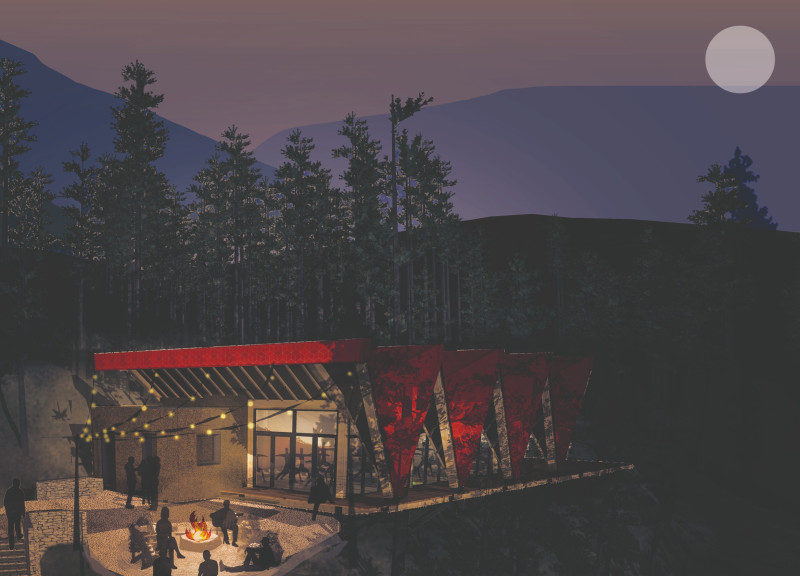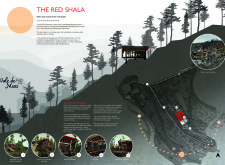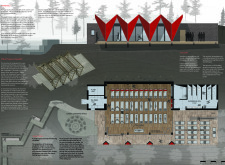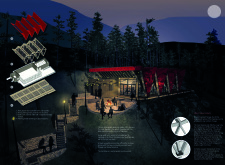5 key facts about this project
At its core, The Red Shala represents a retreat from the busyness of everyday life, providing an environment that encourages introspection and tranquility. Its large windows and outdoor spaces invite natural light and views of the lush forest, promoting a strong connection between the interior and the exterior. This integration with the natural landscape is a fundamental aspect of the project, enhancing the serenity required for mindfulness practices.
The main function of The Red Shala is to facilitate yoga sessions, meditation practices, and communal gatherings, allowing users to engage in self-care and foster connections with others. The design includes several key areas: the main yoga shala is spacious and inviting, with high ceilings that create an airy atmosphere. Complementing this space are functional areas such as the tea preparation area and plant room, which are designed to create a sense of nurturing and wellness. Additionally, the integration of showers and WCs ensures that visitors are comfortable during their time at the retreat.
Unique design approaches are evident throughout The Red Shala, particularly in its structural concept and material choices. The use of glulam, or glued laminated timber, is a defining feature that not only provides a robust framework but also aligns with sustainable building practices by utilizing locally sourced materials. This choice of material contributes to the sense of warmth within the space while minimizing the environmental impact of construction. The sloping roofline, reminiscent of traditional architectural styles, is more than an aesthetic choice; it serves practical functions of water drainage and passive cooling, allowing the building to adapt to local climatic conditions.
Another noteworthy aspect of The Red Shala is its focus on sustainability. Materials such as cork are used for insulation, promoting energy efficiency and sound absorption. Additionally, the project incorporates renewable energy solutions, including solar panels, which further reflect a commitment to environmentally responsible architecture. The structure itself is finished in a vibrant vermilion hue, making it visually distinctive against the green backdrop, symbolizing a safe space for personal exploration and community engagement.
The thoughtful design also encompasses the approach leading to The Red Shala, where visitors are guided through existing vegetation, emphasizing a gradual transition from the outside world to a sanctuary of calm. This pathway enhances the experience of arrival, encouraging individuals to let go of external distractions and embrace the serenity that awaits.
Ultimately, The Red Shala exemplifies a comprehensive architectural approach that prioritizes user experience, sustainability, and aesthetic harmony with its surroundings. As an architectural project, it stands as a model for future designs aimed at fostering connections with nature and community. For those interested in delving deeper into this remarkable project, exploring the architectural plans, sections, and designs can provide further insights into the principles and ideas that drove its creation.


























